- Kia ora
- Ōtaki Gorge Road
- The snails that cross our bridge
- Bridge 5 – Ōtaki River Bridge – steaming ahead
- Reconstructing the historic Mirek Smišek kilns
- State Highway 1 diversion blessed
- Upcoming construction milestones
 Kia ora
Kia ora
I’d like to wish you all a happy, healthy holiday and a great New Year. Here’s hoping 2021 won’t present the same challenges that 2020 has.
Despite COVID-19, it’s been a productive year on the Peka Peka to Ōtaki (PP2Ō) Expressway project. Nine of the 10 bridges are now in use by either construction or public traffic – four having been built in the past year.
Three bridges opened to construction traffic this year – Bridge 1 over Waitohu Stream near Taylors Road, Bridge 5 over the Ōtaki River and Bridge 8, which connects School Road and Te Horo Beach Road over the existing SH1 and Main North Line.
This is extremely significant for the community and for the project.
For the community, the reduced construction traffic on Ōtaki’s busy roads eases congestion and causes less disruption from traffic management or street sweeping.
From a project perspective, being able to run construction traffic over the bridges shortens the distances we need to haul material and reduces delays on already congested public roads, which helps make our project even more efficient.
We’ve also been busy with earthworks and drainage activities. We’ve shifted 180,000 cubic metres of structural fill, 200,000 cubic metres of unsuitable material and 46,000 cubic metres of topsoil used for landscaping. We’ve completed an 11-barrel culvert at Taylors Road as well as approximately 2,461 lineal meters of carriageway drainage, and 1,293 lineal meters of piped culverts.
It’s been a massive year for the project and our team will be enjoying a break over Christmas to spend some quality time with their friends and family, and so that they are refreshed and raring to go in the new year. The PP2Ō site will be shutting down on 22 December, and we’ll be back on board on 5 January 2021.
The work we’ve done this year has set us up for a strong restart in 2021, when there will be a lot of emphasis on pavement and asphalt construction.
I know having an expressway built in your backyard can be disruptive and I want to thank you all for your patience and understanding. I really believe the end product will be worth the disruption – it’s going to be fantastic.
It’s been great to meet you all since I started on PP2Ō in May this year and I look forward to seeing you all in 2021.
Until next time, stay safe, and have a happy Christmas.
If you need any further information on the PP2Ō Expressway project, please call us on 0800 PP2O INFO or email pp2o@nzta.govt.nz
Ngā mihi
Chris Hunt, Project Director
Ōtaki Gorge Road
As we shared in our last edition of Express Connect, essential work at the Ōtaki Gorge Road (ŌGR) intersection with State Highway 1 means ŌGR will be closed for an 11-week period, which will allow our team to start safely constructing the partial interchange. During this period, a detour will be in place along Hautere Cross Road and School Road.
The closure has been timed to align with the opening of the School Road overbridge, which will allow northbound traffic to pass over SH1 and the railway tracks and onto Te Horo Beach Road to access SH1. We’ll be adding some safety modifications to the intersection before the bridge opening, and we are also considering safe and appropriate speed limits for the area.
We know this work will be disruptive, and we thank the community for working with us on these changes. Thanks to some constructive suggestions from the community, we will be ensuring left-in and left-out access at School Road for those travelling south. The closure of ŌGR is currently planned for late February / early March. We will circulate the timeframe as soon as it is finalised and provide you with weekly updates once work begins.
Hautere Cross Road diversion
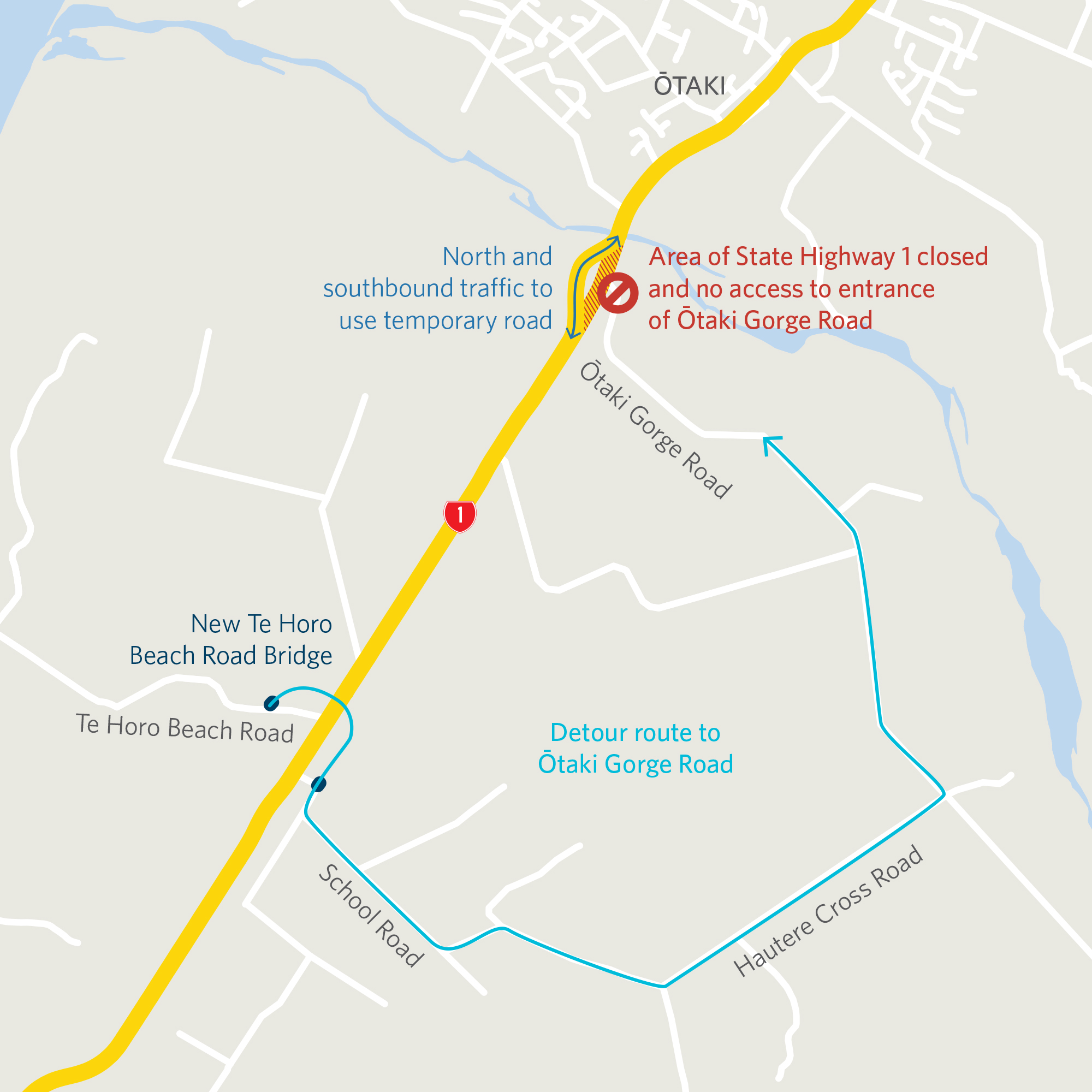
Left in / left out at School Road
Northbound traffic will use Bridge 8 at Te Horo to access the state highway
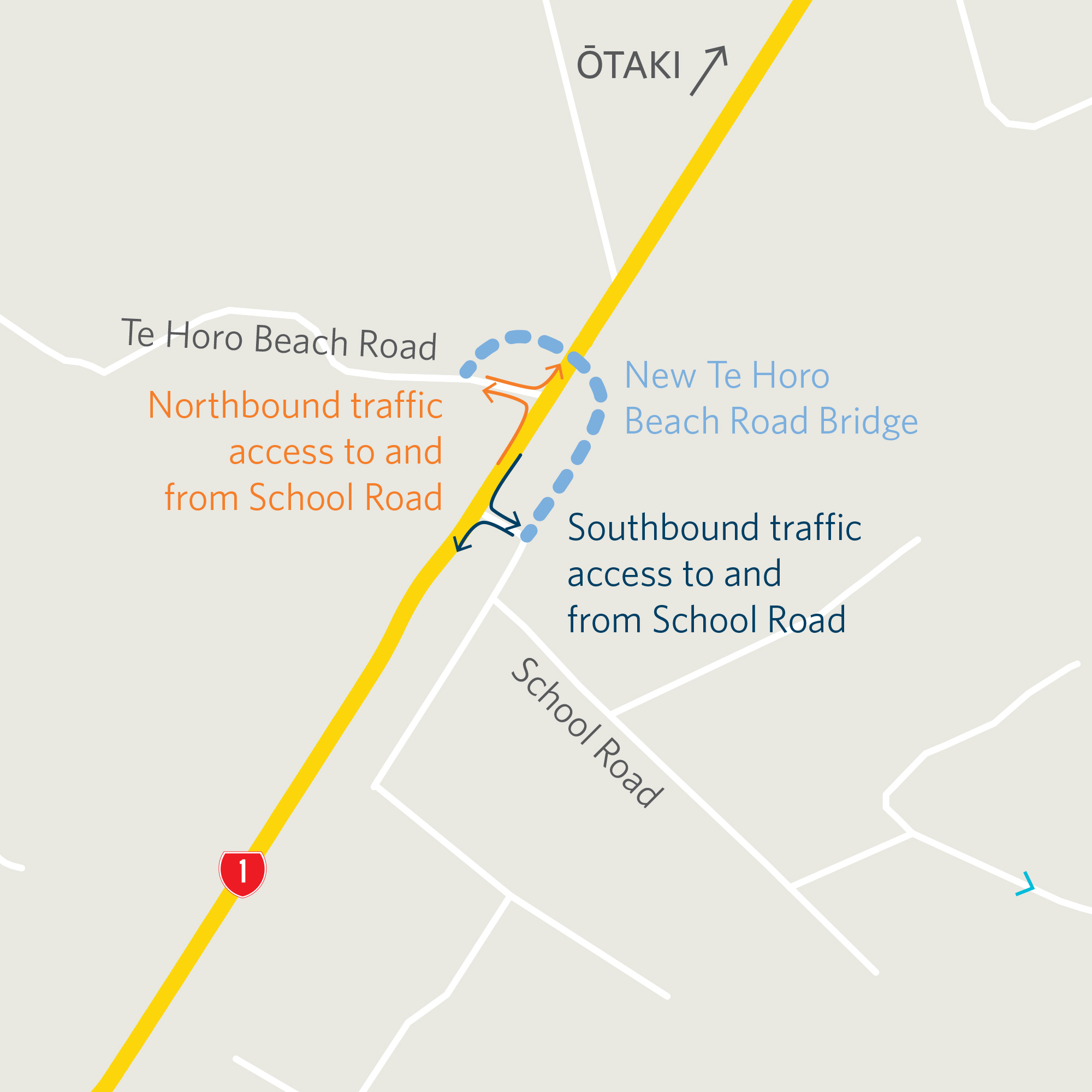
The snails that cross our bridge
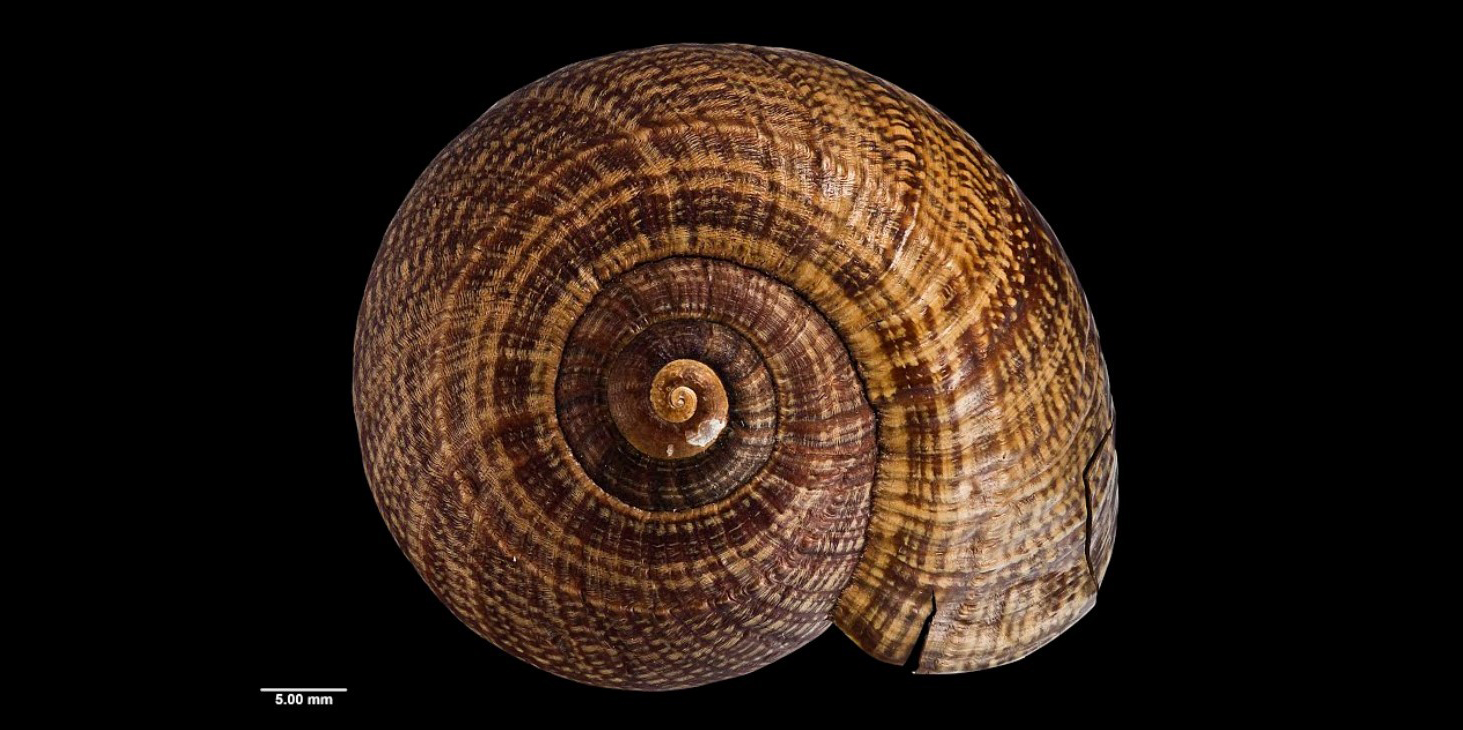
Powelliphanta traversi otakia – indigenous to Ōtaki and Te Horo, and critically endangered.
If you’ve driven under the recently constructed Te Horo Beach Road bridge you may have noticed that the bridge is crawling with snails - five of them, to be precise. The snail-themed artwork on the decorative panels is a nod to Powelliphanta traversi otakia, a snail endemic to the Ōtaki – Te Horo area.
In the mid-1900s, a Wellington-born malacologist, Arthur Baden Powell, participated in dredging expeditions on the British research ship Discovery II. He explored coastal New Zealand and catalogued many undocumented species, including the Powelliphanta subspecies of snails, which was later named after him.
There are a couple of characteristics that make the Ōtaki snail particularly interesting. For starters, it’s a hermaphrodite, which means it doesn’t need a dating website or a breeding program – it can self-reproduce. It is also, contrary to most snails, a carnivore - known for feeding on earthworms and slurping them up like strands of spaghetti. Powelliphanta traversi otakia is also known for its longevity, with a lifespan of at least 20 years.
It’s possible that many people aren’t aware that there is such a special snail living in the area. Sporting an olive-brown to old-gold coloured shell with distinctive wavy or discontinued dark brown stripes, Powelliphanta traversi otakia has a maximum length of 50mm and maximum height of 26mm.
Sadly, it’s classified as critically endangered, but it wasn’t always that way.
In the pre-European era, Powelliphanta traversi otakia was common in the Ōtaki-Te Horo area. However, the loss of its original forest home as the area was settled, and the introduction of predators such as rats, possums, pigs and thrush, nearly saw it completely wiped out.
If you are lucky enough to see one, you can feel very privileged.
Today, with an adult population of less than 1000, the snail is closely monitored by the Department of Conservation, which is working with the few, private, protected properties that the Ōtaki snail can still call home.
These beautiful taonga desperately need all the protection they can get. Collecting live Powelliphanta snails is illegal under the Wildlife Act 1953 and even empty shells cannot be held without a permit.
So next time you are heading north towards the Te Horo Beach Road bridge, keep an eye out for the decorative panels celebrating these precious, endangered Ōtaki – Te Horo residents.
In the future, we’ll tell you about Powelliphanta traversi otakia’s friend Woodworthia maculata, otherwise known as the Raukawa Gecko. We’ll also bring you other stories of our bridge art in future editions of Express Connect.
Bridge 5 – Ōtaki River Bridge – steaming ahead
Bridge 5, spanning the Ōtaki River, is a spectacular piece of engineering work. Among the many engineering considerations was the need to keep people safe in the event of an earthquake. The structures team, led by Jethro Staite, are making good progress on its construction and the bridge is now open to construction traffic. Get an insight into the construction of this impressive structure in the video below.
Reconstructing the historic Mirek Smišek kilns
Reconstructing the historic Smišek Kilns has been a work of patience and precision. The rebuild team –potter Duncan Shearer and Rick and Jamie Mead of The Brothers Mead Block and Brick Laying – have painstakingly pieced the huge kilns back together using the original bricks wherever possible.
Rick said it was like a three-dimensional jigsaw puzzle, with some of the damaged bricks literally being glued back together piece by piece so they could be reused.
Thanks to their expertise, the first of the kilns has been reconstructed and it’s hoped the second one will be completed just before Christmas - leaving just the chimney to go.
Mirek Smišek Arts Trust member Susi White said she’s very excited to finally see the beehive kilns reinstated, as they are so integral to Ōtaki’s history.
However, for Suzi the job doesn’t end when the last brick is slotted into place. There’s still the important task of raising the capital for the multi-use arts facility, where the kilns are planned to be a central feature.
Susie and the Trust have organised the Loll in Lavender Family Picnic, to be held at Lavender Creek Farm in Te Horo. It promises to be a great day out – there’ll be live bands and plenty of other entertainment to add to the ambiance. There is a fee to attend (16 years old and under are free) and all proceeds will go towards the creation of the Mirek Smišek Art Centre. For further information email lavendercreeksusi@gmail.com
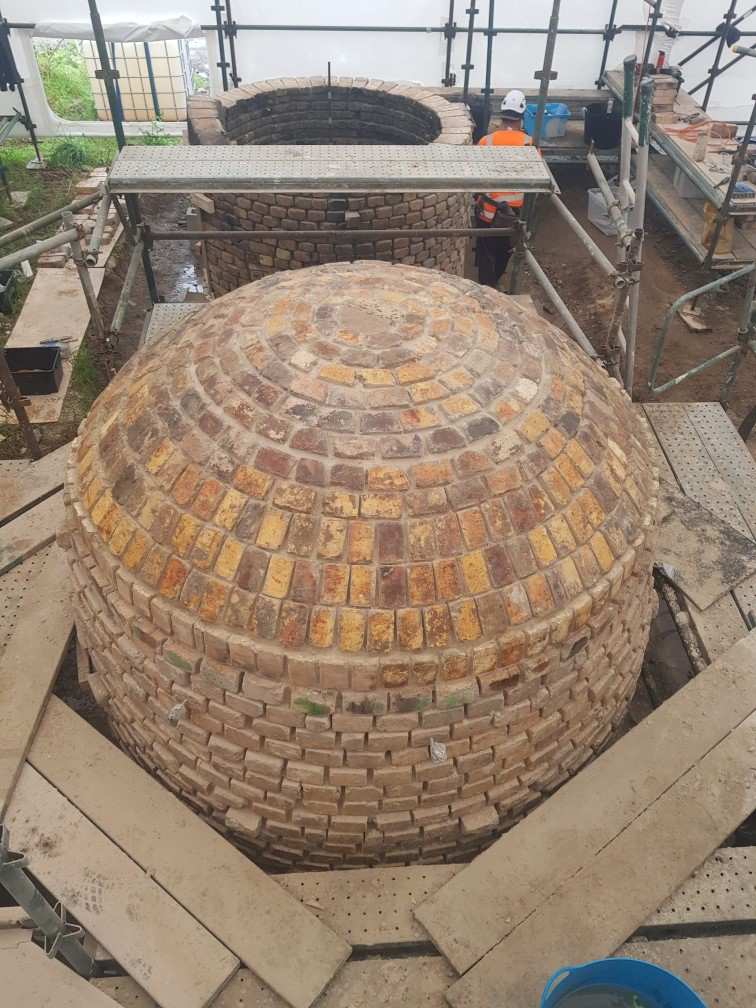
One down – one to go. The reconstruction of the historic Smišek Kilns has been a work of precision.
State Highway 1 diversion blessed
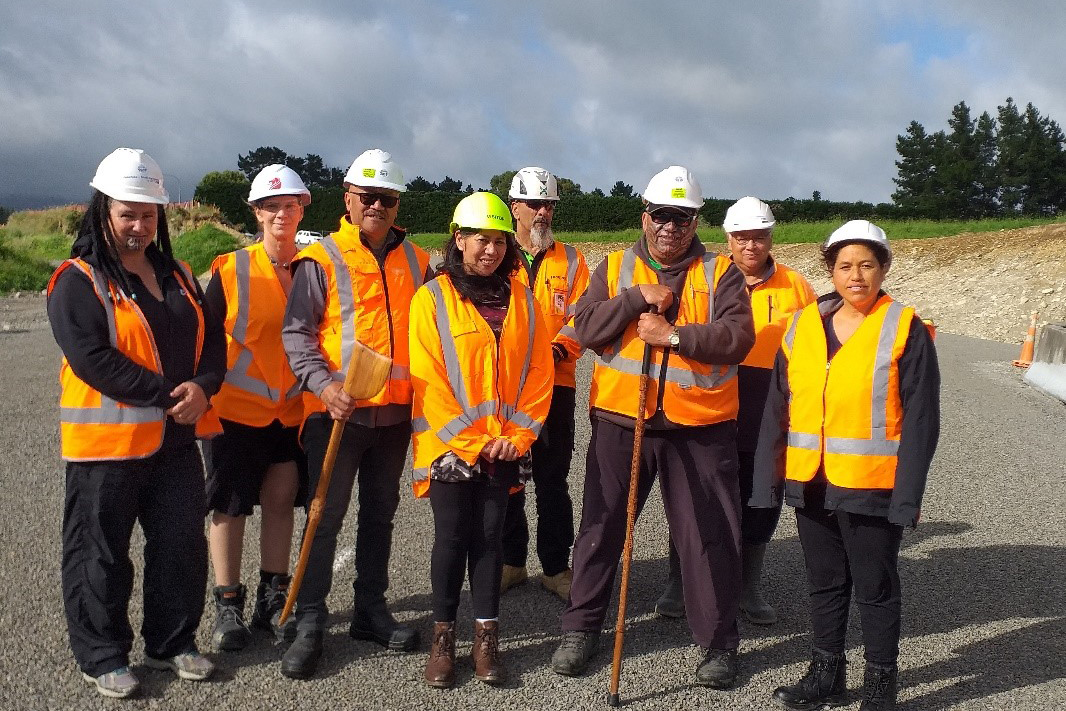
The SH1 diversion just south of the Ōtaki River Bridge was blessed by members of Ngā Hapū o Ōtaki early on Friday 11 December.
Led by Rawiri Rikihana, the blessing was conducted prior to traffic moving onto the diversion later that day.
Upcoming construction milestones
Northern area update
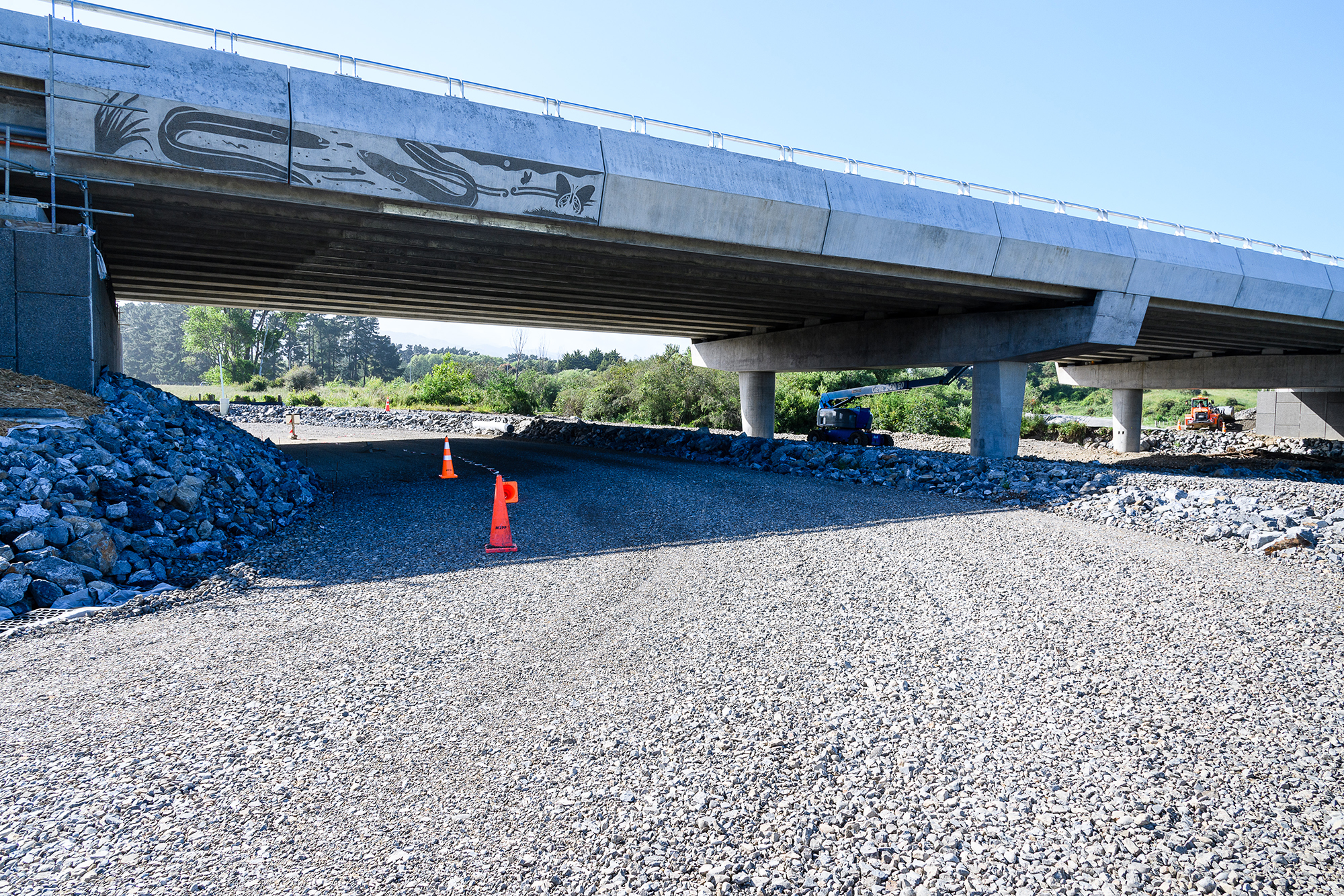
Bridge 1 and the new Taylors Road.
Pavement works are underway on the new permanent section of Taylors Road, and will continue into the new year. Bridge 1 over the Waitohu Stream is essentially complete and being used by the project to move earthworks from south of the stream to the north of the stream. Barriers separating the expressway and the railway between the Rāhui Rd overbridge (Bridge 4) and the Main North Rd expressway overbridge (Bridge 2) have been installed. Earthworks on the expressway embankment up to the northern abutment of Bridge 5 over the Ōtaki River have been completed, and the bridge is now available for construction access between the northern and middle sections of the project.
Central area update
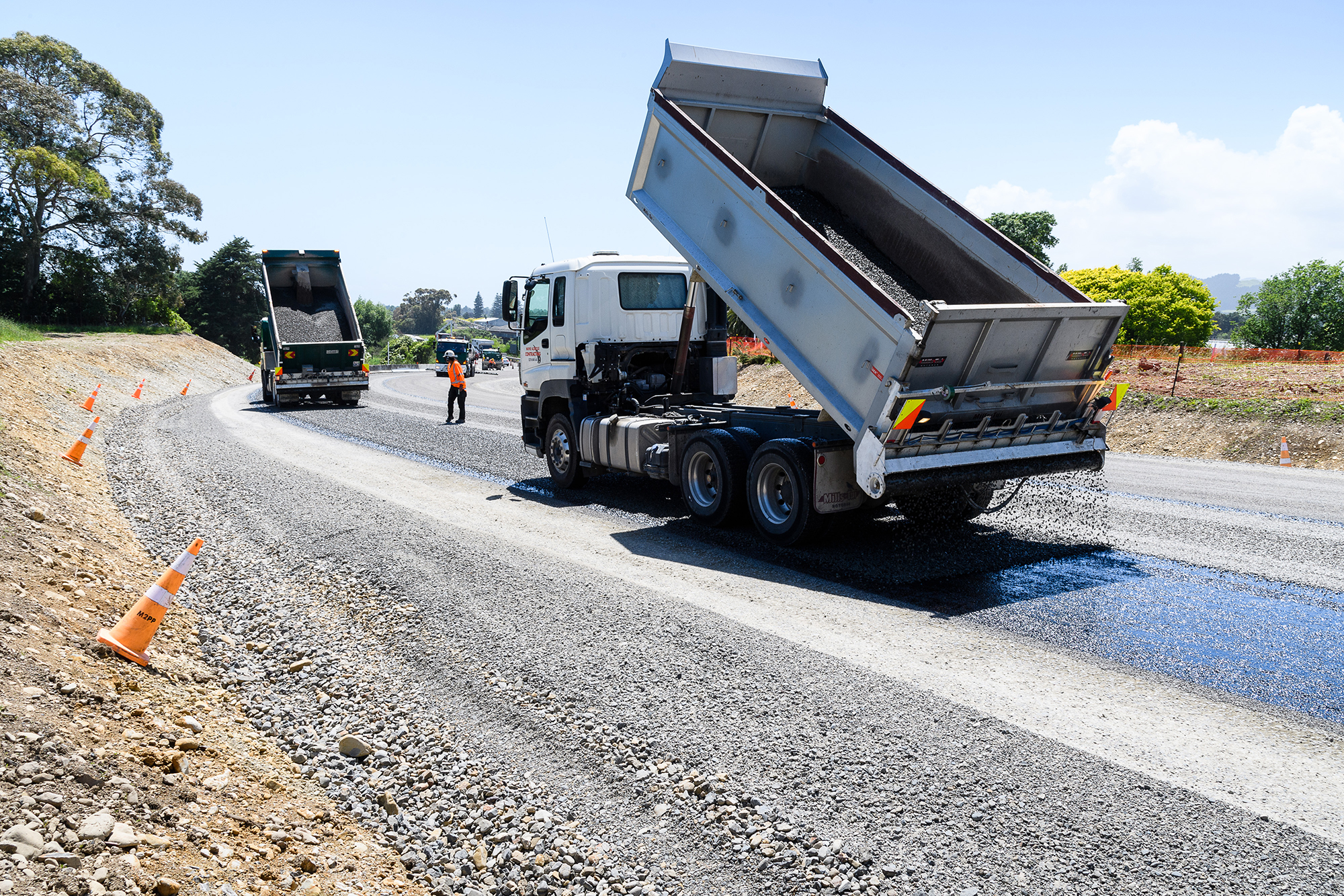
Paving team at work on the State Highway 1 diversion south of the Ōtaki River Bridge.
Works continued through the wet weather of November / early December with the temporary SH1 diversion past the Ōtaki Gorge Road intersection being completed and traffic running on the temporary section prior to the Christmas break. Pavement works have started on the east and west approaches to the Te Horo overbridge. The bridge itself is substantially complete and, like bridges 1 and 5, is available to construction traffic, minimising the amount of construction traffic using the road in the area. Pavement works on the expressway between School Road and the Makahuri (formerly Marycrest) rail overbridge recommenced just prior to the Christmas break.
Southern area update

Earthworks continues at site opposite Makahuri.
Earthworks and ground improvements between Makahuri (formerly Marycrest) and Peka Peka progressed well during the wet period – it’s one of the great advantages of working in sands! The last of the major transverse culvert construction works got under way, with large diameter pipes being installed across the expressway at the Kumutoto Stream location. Embankment construction has also advanced at the approach to the Makahuri rail overbridge, with the last of the settlement slab works over the two large box culvert structures underway before the Christmas break.